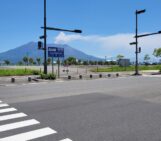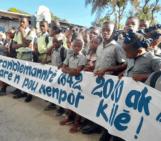
Climate hazards are manifestations of the Earth’s complex climatic systems. As natural events, they have always occurred, yet changes in the global climate increase the frequency and intensity of extremes and their impact on the built environment and people. Predicting the nature, scale, and location of climate hazards and their complex interplays with anthropogenic factors is not a straightforward process, and requires understanding and managing several uncertainties. Let us explore some characteristics that determine this ‘symphony of uncertainties’, investigating the complex relationship between climate hazards and human societies.
Intro – The climate reality
Record-breaking climate extremes have been repeatedly identified as one of the top global risks demanding urgent action as existing climate adaptation efforts tend to be inadequate to address their scale and intensity [1]. Between 1980 and 2022, climate-related extremes in Europe amounted to an estimated EUR 650 billion (2022 prices) [2]. In the past decades, many changes in the climate system have become more significant due to global warming, exhibiting an increase in the frequency and intensity of climate hazard occurrences [3], suggesting that we may have to deal with greater economic losses in the future.
Movement I – The realm of climate hazards and the realm of humans
In the ‘realm of climate hazards’, climate drivers and interactions within the Earth’s system influence the occurrence, intensity, and spatial distribution of climate hazard occurrences, suggesting a certain degree of uncertainty. Feedback mechanisms within the Earth’s systems can amplify the impacts of climate hazards, leading to cascading effects and tipping points. For instance, deforestation can exacerbate drought conditions by reducing evapotranspiration rates. With the continued global warming and observed and projected changes in the global climate, unexpected or extreme weather patterns are more likely to occur, exacerbating these impacts [3]. For example, the intensification of precipitation will likely increase the risk of flooding in specific locations. Aside from the natural variability, uncertainty linked to greenhouse gas emissions is an aspect to consider, and as recent evidence suggests, climate models may struggle to explain temperature changes [4].
Probable impossibilities are to be preferred
to improbable possibilities
Aristotle
On the other side, looking at the ‘realm of humans’, the diversified human nature is the result of a complex interrelationship between culture, experience, genetics, and individuality. Societies include a vibrant mosaic of beliefs, values, perspectives, and personalities shaped by unique life journeys and complex neural networks. Understanding people’s views and perceptions is essential in developing initiatives to reduce climate hazard-related risks. Also, looking around the world, human development tends to be influenced by a complex interplay of factors spanning economic, environmental, cultural, and institutional domains, with disparities often exacerbating social vulnerability to climate extremes [5, 6]. Understanding these multifaceted dynamics is necessary for addressing inequalities and promoting inclusive climate risk mitigation strategies in the right context.
Movement II – Converging realms
Climate hazards, such as storms, floods, wildfires, droughts, and heatwaves, impact exposed and vulnerable human environments worldwide. How urban systems and communities address climate hazards depends on socioeconomic and human development factors, cultural norms, governance structures, and technological capacities. Also, how climate hazard-related risks are perceived shapes the overall understanding and anticipation of the impacts and, subsequently, the overall level of coping and adaptive capacity [7, 8]. Existing vulnerabilities in urban environments can be exacerbated by inequalities, ranging from inadequate infrastructure systems, urbanisation processes, or poor institutional mechanisms to social inequalities that can lead to disproportionate impacts on marginalised groups [9,10].

Drone footage of heavy flood (Photo credit: Christian Wasserfallen, Pexels Licence)
Movement III – The symphony of mitigation and adaptation
The relationship between climate hazards, climate change influences, and unique characteristics of societies is complex, giving rise to various consequences. In this relationship, uncertainty can be seen as the conductor orchestrating the rhythms of hazard, exposure, and vulnerability. Navigating uncertainty requires a blended approach that combines mitigation and adaptation action. On the one hand, it is necessary to build adaptive capacity to adjust to the current and anticipated impacts of different climate hazards, minimising local, regional, and global vulnerabilities. This may entail investments to build resilience in urban systems, land use planning, nature-based approaches, enhancing early warning systems, and strengthening social safety nets. On the other hand, action is required to address the drivers of climate change and limit its future impacts. Typical mitigations include measures to reduce greenhouse gas emissions, decarbonisation, and transition to sustainable energy sources.
Movement IV – The symphony of collective action
Addressing the interplay between climate hazards and human societies implies collaboration and collective action across sectors and borders. It also necessitates an effort to bridge the gap between scientific knowledge, policy implementation, societal awareness, and risk response. A more people-centred preventive approach to disaster risk would enable reducing existing and preventing new climate hazard-related risks [11]. This approach would also cultivate trust at institutional and community levels, which will further enhance human societies’ capacity to take action to mitigate the adverse effects of climate hazards [12]. An aspect to consider is the composer’s efficiency regarding the engagement and synchronisation of the different stakeholders to promote a climate risk-aware culture, knowledge exchange, risk communication, awareness raising, and research and innovation to navigate all these uncertainties.
Conclusion – Embracing uncertainty
Acknowledging the uneven rhythms of change and the elements that shape the interplay between climate hazards and human societies calls for harmonising efforts to mitigate risks and adapt. This realisation also calls for embracing change and developing attributes that will guide a more sustainable development. As the Greek philosopher Socrates said, “The secret of change is to focus all of your energy, not on fighting the old, but on building the new”.
References
[1] World Economic Forum (2024) Global Risks Report 2024
[2] European Environment Agency (2023), Economic losses from weather- and climate-related extremes in Europe
[3] IPCC (2021) Climate Change 2021: The Physical Science Basis, 6th Assessment Report
[4] Schmidt G. (2024) Why 2023’s heat anomaly is worrying scientists, Nature 627
[5] Opoku E.E.O., Dogah K.E., Aluko O.A. (2022). The contribution of human development towards environmental sustainability, Energy Economics, 106, 105782
[6] European Environment Agency (2018). Unequal exposure and unequal impacts: social vulnerability to air pollution, noise and extreme temperatures in Europe
[7] Diakakis M., Skordoulis M., Savvidou E. (2021). The relationships between public risk perceptions of climate change, environmental sensitivity and experience of extreme weather-related disasters: Evidence from Greece, Water, 13, 2842
[8] Sacchi S., Faccenda G., De Michele C. (2023). Risk perception and behavioral intentions in facing compound climate-related hazards, iScience, 26 (1), 105787
[9] Smiley, K.T., Noy, I., Wehner, M.F. et al. (2022). Social inequalities in climate change-attributed impacts of Hurricane Harvey. Nat Commun 13, 3418
[10] Nguyen C.P., Nguyen B.Q. (2023). From natural risk to social justice: The influence of natural threats on gender inequality, Environmental and Sustainability Indicators, 19, 100270
[11] UNISDR, Sendai Framework for Disaster Risk Reduction 2015-2030
[12] Bonfanti, R.C., Oberti, B., Ravazzoli, E., Rinaldi, A., Ruggieri, S., Schimmenti A., (2024). The Role of Trust in Disaster Risk Reduction: A Critical Review. Int. J. Environ. Res. Public Health, 21, 29.
Post edited by Silvia De Angeli and Paulo Hader




